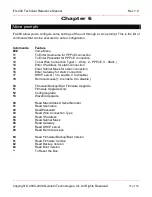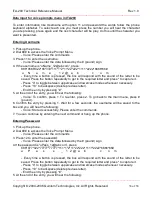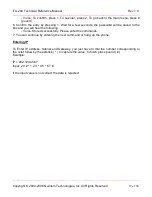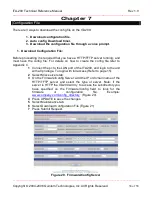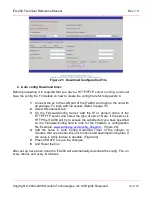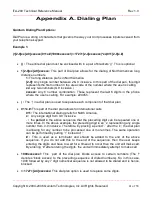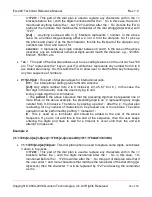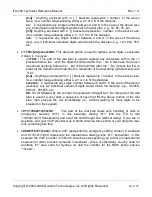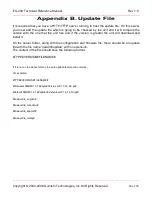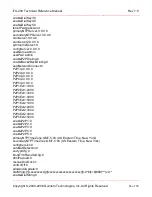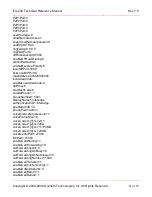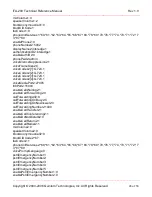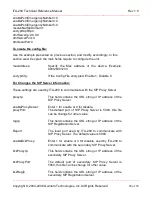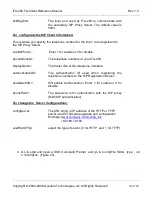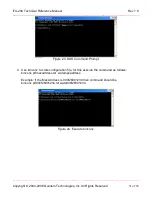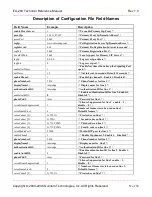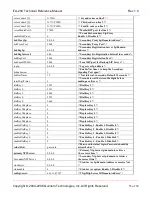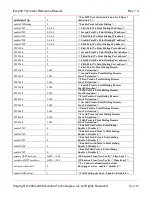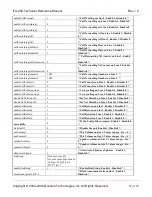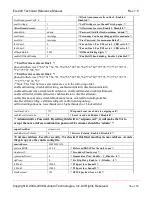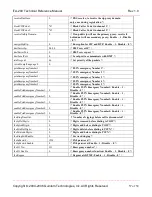
ITA-200 Technical Reference Manual Rev 1.0
___________________________________________________________________
_____________________________________________________________________________________
Copyright © 2004-2006 Quintum Technologies, Inc. All Rights Reserved
42 of 58
<:1727> :
This part of the dial plan is used to replace any characters with in the <>
brackets before the
:
, with the digits mentioned after the
:
. So in this case, there isn’t
mentioned anything before the
:
, but 1727 is written after the
:
. So it’s tells the ITA to
prefix all the numbers that matches the remainder of the dial string([2-4]xxxxxxx) with
‘1727’.
[2-4] :
Anything enclosed with in ‘[]’ brackets represents 1 number. In the above
case, it’s a number range allowing either a 2,3 or 4 to fit the dial plan. So if I pick up
the phone and press ‘4’ as the first character, this fits the first part of the dial plan. Any
numbers like 5 to 9 and 0 won’t fit.
xxxxxxx
:
‘x’ represents any single number between 0 and 9. In the case of the above
(xxxxxxx), any six individual numerical digits would match the dial plan. e.g., 123456,
654321, 555555, etc.
•
*xx :
This part of the dial plan allows user to use calling features on the unit such as *69
etc. The * represents the * key on your ITA while the x represents any number from 0 to 9
(as stated previously). So, this tells the ITA to allow user to dial the Star key followed by
any two sequence of numbers.
•
011[2-9]x.# :
This part of dial plan allows for international calls.
011:
The international dialing prefix for North America
[2-9]:
Any single number from 2 to 9 inclusive( 2,3,4,5,6,7,8 or 9 ). In this case, the
first digit in the country code the user is trying to call.
x:
Any single digit from 0-9 inclusive
. :
The
period
in the above sequence that the preceding digit can be repeated one or
more times. In the above example, the preceding digit is an ‘x’ representing any single
number from 0-9 inclusive. Therefore, by placing a period ‘
.
’ after the ‘x’, the dial plan
is allowing for any number of characters to be pressed one or more times. The same
operation can be performed by putting ‘+’ instead of ‘
.
’
#
: This is used as a terminator and should be added to the end of the above
Sequence. If you do not add this to the end of the sequence, then the user keeps
entering the digits and have to wait for a timeout to occur until then the unit will
attempt to make call.
Example 2:
(<1:1728>[2-4]xx[3-8]xxx|<:1780>[2-4]xxxxxxS0|<911:17804213333>S0)
•
<1:1728>[2-4]xx[3-8]xxx:
This dial plan option is used to replace some digits. Lets break
it down in to pieces..
<:1728> :
This part of the dial plan is used to replace any characters with in the <>
brackets before the
:
, with the digits mentioned after the
:
. So in this case, ‘1’is
mentioned before the
:
, 1728 is written after the
:
. So this part of dial plan tells that if
the user enter 1 and more characters that matches the remainder of the dial string ([2-
4]xxxxxxx) then the character ‘1’ will be replaced by 1727 and leaving the remainder
as it is.








